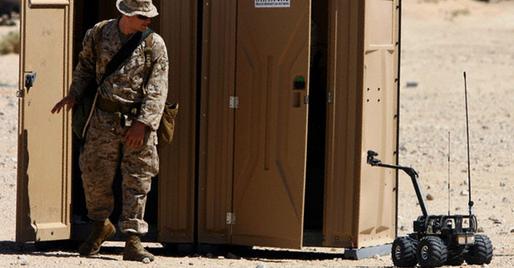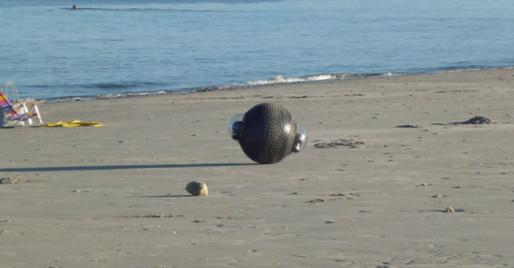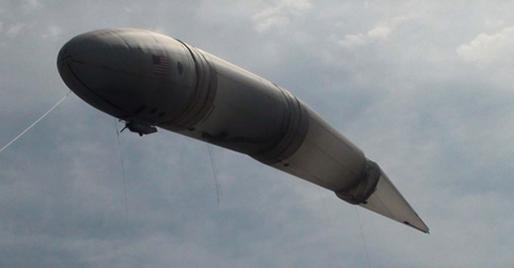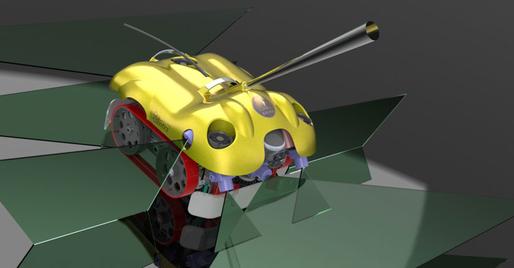Swarms of Robotic Boats Could Surround Enemy Ships

In an exercise that was the first of its kind, five autonomous boats formed a defensive line between an intruder and the ship they were protecting.
Every day brings new headlines of the warfighting capabilities of drones patrolling the skies over Iraq, Afghanistan, Pakistan, Yemen and any number of places where strife continues. While pilots operate the drones remotely from bases back in the U.S., there are a host of smaller robots that deserve a bit of attention as well. From scrubbing barnacles off aircraft carriers to spying on bad guys from the clouds, this new class of autonomous military robot could see action on or near the battlefield in the coming year. Here, Lance Corporal Joe Henkel checks out the MARCbot iV, a remote-controlled robot used in IED investigations.
This spherical, 54-pound bot rolls across land, mud, rocks and water with a spy camera hidden inside its fiberglass shell. An internal pendulum keeps the two cameras stabilized as the shell rotates and provides motion. Connecticut-based American Unmanned Systems initially designed Guardbot to rove across the Martian surface for a European Space Agency mission that was later scrubbed, so president Peter Muhlrad switched to military and commercial applications, mainly guard and reconnaissance duty. It was also deployed recently by a Mexican television network during a live soccer match at Mexico City’s Azteca Stadium. Guardbot is undergoing tests by the Marines in Quantico, Va., and Camp LeJeune, N.C., Muhlrad said. An aquarium in Florida is also interested in using Guardbot to interact with its dolphins.
This 113-foot flexible airship drone “wiggles like a snake” when faced with strong winds, rather than being tossed around like a balloon, said Dan Erdberg, director of business development for World Surveillance Group Inc., based at Kennedy Space Center, Fla. That means it can hover in at 10,000 to 15,000 feet above a target with minimal effort. The helium-filled composite material bags are covered with an outer layer of ripstop nylon. Argus One also has a stealthy, almost-zero radar footprint, making it nearly invisible while supporting a platform of high-resolution spy cameras or other remote-sensing devices, Erdberg said. “This could dwell over an area for a long time, if it sees people you could send in one with arms,” he said. “It’s in the clouds and literally impossible to pick up.” Argus is undergoing tests at the Department of Energy’s Nevada test facility in December (that’s next door to the infamous Area 51).
As any boat owner knows, scraping barnacles is the bane of a sailor’s existence. But for the Navy, “marine bio-fouling” of sea grasses, barnacle colonies and tube warms costs taxpayers an estimated $1 billion a year. That’s because ships coated with this biological material travel more slowly through the water, and so their engines burn more fuel. Sea Robotics “Hull Bug” crawls across the ship’s hull cleaning bio-junk without using harsh copper- based chemicals that can damage the marine environment. Sea Robotics President Don Darling says the device sticks to the hull using a special negative pressure device, and cleans with spinning rotor brushes. Autonomous sensors look for bio-material without the need of an operator guiding it — and Darling says it can clean an entire ship in a day while it’s docked in port.














